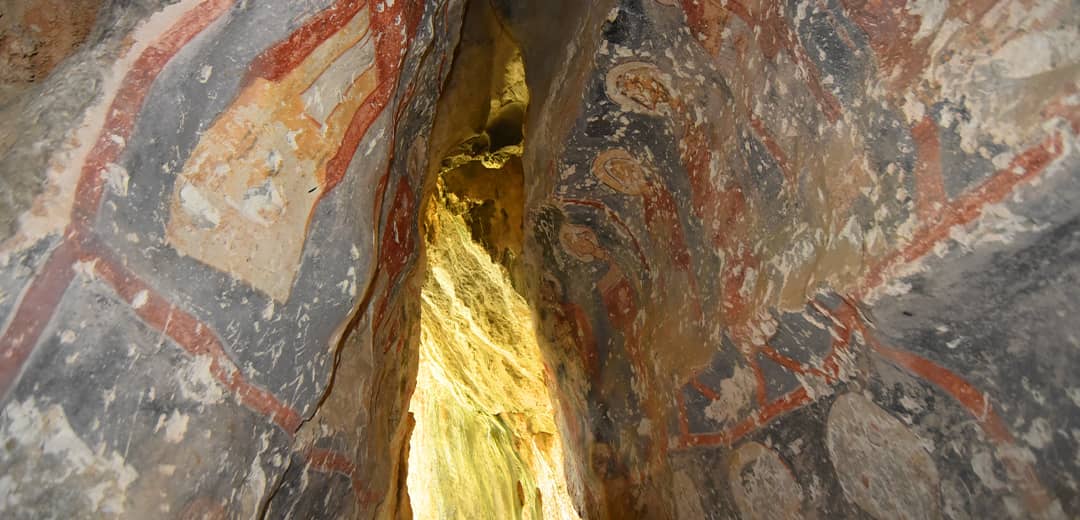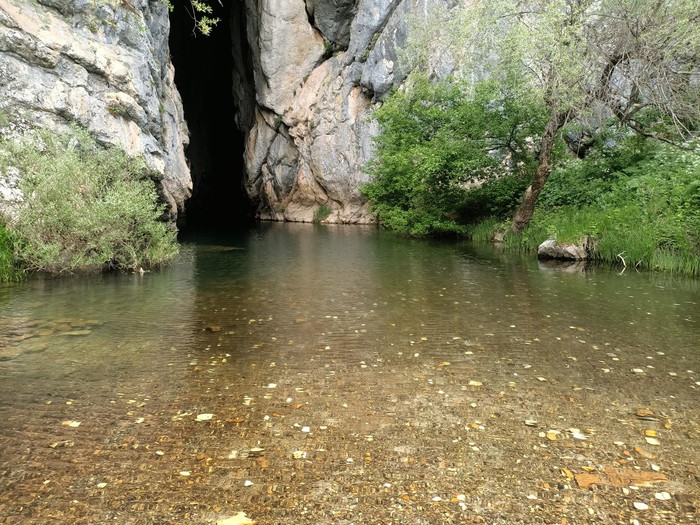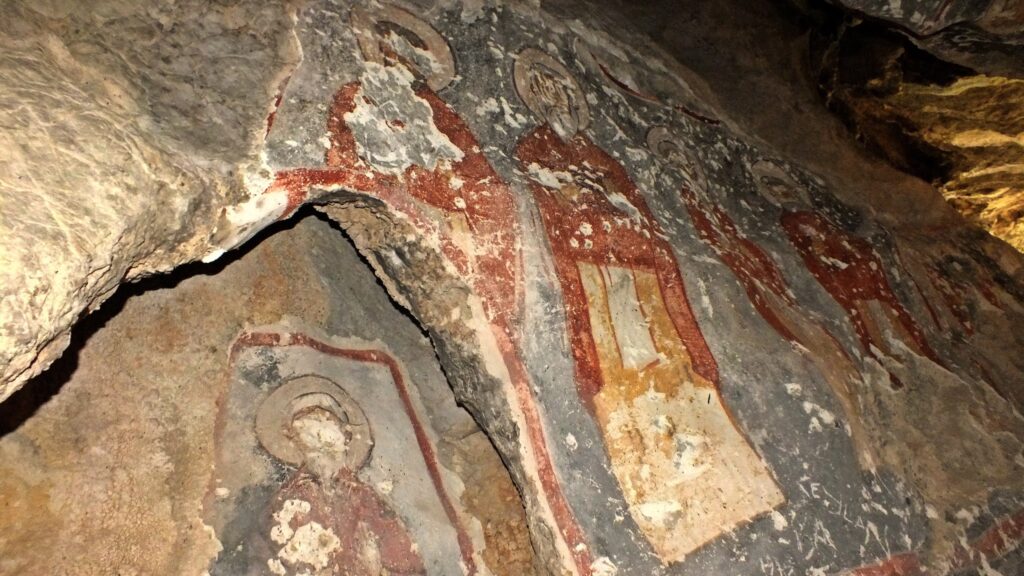
Gavur Beşiği Cave: A Hidden Byzantine Sanctuary
Nestled in the lush Çamlık Nature Monument of Konya’s Derebucak district, Gavur Beşiği Cave is a hidden paradise. It captivates visitors with its natural beauty and historical significance. Locals also call it the “Painted Cave,” and it awaits discovery like a treasure trove.
Whispers of History: Traces of the Past
Gavur Beşiği Cave is relatively small, measuring about 20 meters in length and 5 meters in height. However, it serves as a time capsule filled with historical riches. The walls and ceiling are adorned with figures and symbols from the Byzantine period. These features provide crucial clues that suggest the cave was once a place of worship.

Framed sections on the cave’s walls display two angel figures and various saints. Experts believe these images represent Jesus Christ and his twelve apostles. Such unique details highlight the cave’s historical significance.
A Natural Retreat
The natural structure of Gavur Beşiği Cave is impressive. It has a dry and cool atmosphere, lacking any water sources or streams. However, its location within the Çamlık Nature Monument offers visitors an unparalleled nature experience. While visiting the cave, you can stroll through the lush forests and enjoy the fresh air and the sounds of birds.

A Protected Heritage
The importance of Gavur Beşiği Cave became official in 1990. It was registered as a site of cultural and natural significance. The Konya Cultural and Natural Heritage Preservation Board designated the cave as a First and Second Degree Natural and Historical Site. This recognition acknowledges it as an important heritage that needs protection.

Visiting Hours and Accessibility
The best times to visit Gavur Beşiği Cave are during spring and summer. During these seasons, the vibrant colors and beauty of nature are at their peak. Accessing the cave is easy. You can travel from Derebucak district to Çamlık Village and take a short walk within the Nature Monument. There is no entrance fee required for visiting the cave.
You may also like
- A 1700-year-old statue of Pan unearthed during the excavations at Polyeuktos in İstanbul
- The granary was found in the ancient city of Sebaste, founded by the first Roman emperor Augustus
- Donalar Kale Kapı Rock Tomb or Donalar Rock Tomb
- Theater emerges as works continue in ancient city of Perinthos
- Urartian King Argishti’s bronze shield revealed the name of an unknown country
- The religious center of Lycia, the ancient city of Letoon
- Who were the Luwians?
- A new study brings a fresh perspective on the Anatolian origin of the Indo-European languages
- Perhaps the oldest thermal treatment center in the world, which has been in continuous use for 2000 years -Basilica Therma Roman Bath or King’s Daughter-
- The largest synagogue of the ancient world, located in the ancient city of Sardis, is being restored











Leave a Reply